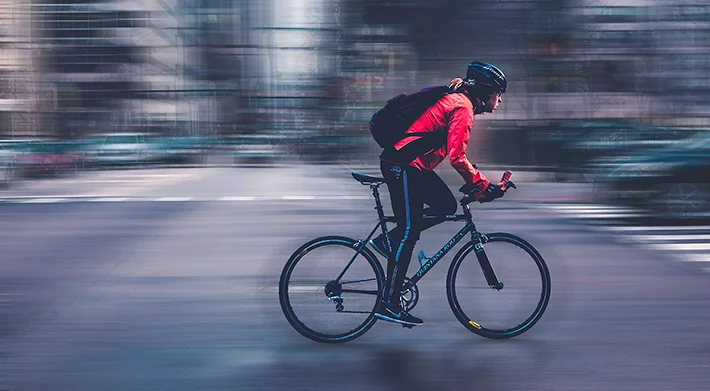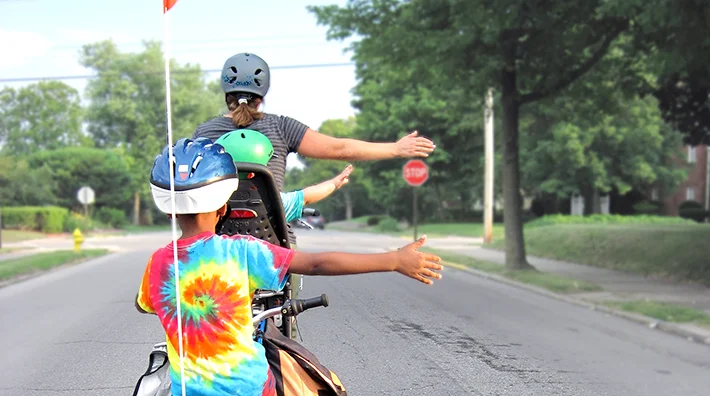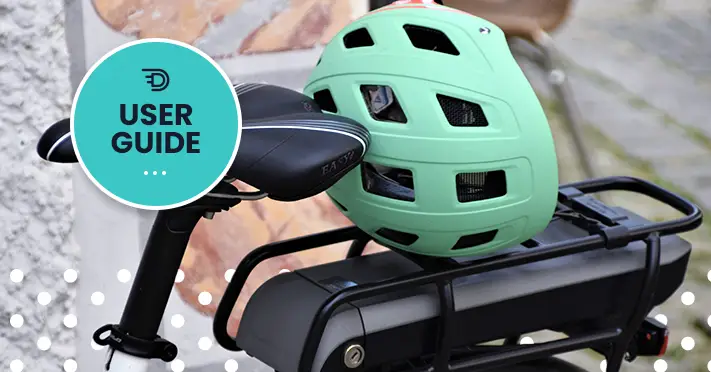Once you ride an electric bike for the first time you’ll immediately come to understand why they are so much fun. Hills are less of a problem and you can accelerate like a bat out of hell. E-bikes are also very popular among older riders, who may have previously considered themselves incapable of riding a traditional bike due to the effort and mobility required.
All of these great reasons to buy an e-bike have their downside – if you don’t take safety measures you could injure yourself or someone else. Let’s take a look at some ways of riding an electric bike safely.

Wear a Cycling Helmet
According to the nonprofit Helmets.org, in 97% of cycling fatalities in New York state, the cyclist was not wearing a helmet. A majority of those fatalities involved a head injury.
Although it is not a legal requirement in most states to wear a helmet, statistics like the one above prove that a helmet can save your life. Is not ruining your hairdo a good enough reason to take the risk? Particularly if you are riding alone where friends can’t intervene quickly in an accident, a cycling helmet is a no-brainer.
High Visibility
Where the cycling helmet will prevent you from cracking your skull when you have been struck by a car, many would prefer never to be hit in the first place. It’s a fact of life that cars will pass you far too close for comfort, but being seen will at least allow more conscientious drivers to see you at a distance.
Many electric bikes come with front and rear lights wired into the main battery. These take very little energy from the drive battery, so it will be worth your while riding with them switched on even in daylight hours.

Bright, yellow, pink, red, and orange clothing isn’t just a fashion statement among cyclists who ride often, but a way of being seen at a distance too.
If you’re returning to cycling and want added visibility, perhaps go for a fat tire electric bike like the Aventon Aventure (pictured above). This has a larger rear profile than many other city electric bikes and may be seen earlier than a smaller machine, or at least make you feel that way and give you more confidence.
Cool It!
Whether returning to cycling or moving from a traditional bicycle to an e-bike, you will soon feel the thrill of accelerating like a cat off a hot tin roof and staying at quite high speeds. There are some disadvantages to this.
As a first issue, you may be caught off guard as to just how quickly you’re getting up to top speed. If using pedal assist, switch it to the lowest power setting when you pull away. On throttle, go easy until your senses have caught up with you.
Other road users may be caught off guard by how quickly you pull away. They may be planning on out-accelerating you at a junction and possibly put you in a dangerous situation when you leap forward unexpectedly. This is why gentle acceleration pays – it’s better to get home in one piece!
Most electric bikes have powerful brakes because of the greater forces involved in using them compared with traditional bicycles. The e-bike is heavier and therefore has more momentum and can often be traveling at a higher speed. This means you should brake earlier than you may have on a traditional bike. As with acceleration, braking takes practice as you get to know your new machine.
Regular Maintenance Pays
When a chain breaks it doesn’t wait for you to be near a bike shop to repair it. It will just go, and if you’re unlucky it can lock the rear wheel up – at speed this can lead to a nasty wipeout. This is why you should clean and lubricate it regularly and check it for stretch. As a rule of thumb, when it stretches by one full link it is time to change the chain. Another rule of thumb is that chains last about 1,000 miles (though this can be a lot less).
You don’t even want to imagine what would happen if you come up to a busy intersection at full pace when your brakes fail! Brake pads are another important thing to check – like chains they will last 1000 miles (with a large margin of error according to how heavily they are used).
If you can, take the e-bike to a local bike shop for semi-annual service. This might cost $100 plus parts, but having an expert check it, particularly during the winter months when not riding so often, can make all the difference in keeping your e-bike safe. A non-e-bike mechanic will still look at the brakes, cables, chain, cassette, and tires, and will be able to replace hydraulic fluid and maintain the essential safety mechanisms.
Eyes in the Back of Your Head
As with any kind of cycling, you need to be aware of all road users around you – the idea of having ‘eyes in the back of your head’. On mixed-use paths, use your bell to alert pedestrians that you’re coming and slow down until you find it’s safe to pass. Quite apart from a lawsuit if you injure them, hitting a pedestrian can leave you injured too.

Photo by Mark Stosberg on Unsplash
Cars and trucks, on the other hand, aren’t always on the lookout for cyclists. At all times on the road, you need to be alert as to what they are doing. Signal with your arm when planning a turn and don’t be afraid to slow down or stop in a lane if making a left turn.
Some e-bikes, such as the Cannondale Adventure 1 EQ pictured above, have added safety equipment like SmartSense rear-facing radar technology. This tells you how far other road users are behind and whether you need to take evasive action if they are moving too quickly.
Always obey your traffic laws such as stopping at stop signs and traffic lights. If your e-bike can go over the speed limit in a given area, observe those speed limits too – they apply to cyclists as well as motorized vehicles. Such laws are in place for everyone’s safety.
Happy, Safe Riding!
With these tips in mind, you should be able to enjoy happy and safe e-bike riding. Often a bit of good sense can prevent something serious from happening. By taking care you may well be one of the millions of riders who never have a serious accident.



